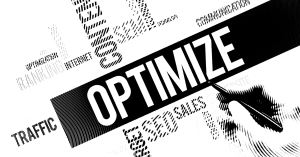
Optimizing buyer enablement
Optimizing buyer enablement You may be wondering how to entice customers to buy your product. There are a few key things you can do to
Inbound marketing is all about drawing customers in, through things like content marketing and search engine optimization. Outbound marketing, on the other hand, is about going out and actively finding customers – think of it as traditional advertising.

Mads Winther

There are pros and cons to both approaches. Inbound marketing can be extremely effective, but it can also be quite slow to see results. Outbound marketing is faster, but it can be less targeted and more expensive.
So, which one should you use? The truth is, the best results come from using a combination of both inbound and outbound marketing techniques. By using inbound methods to attract customers and then using outbound methods to actively seek them out, you can create a well-rounded, effective marketing strategy.
Both inbound and outbound marketing are important and have their own advantages. In order to create an effective marketing strategy, it is best to use a combination of both inbound and outbound marketing techniques.
Inbound marketing is great for attracting customers and creating long-term relationships. However, it can be slow to see results. Outbound marketing is faster, but it can be less targeted and more expensive.
A well-rounded marketing strategy should take advantage of both inbound and outbound marketing in order to be successful.
There’s a lot of debate in the marketing world about which is better: inbound or outbound marketing? Inbound marketing is all about creating content that draws people to your business, such as blogs, ebooks, and infographics. Outbound marketing, on the other hand, is more traditional and involves things like cold-calling, print ads, and TV commercials.
So, which is better? It really depends on your business and your goals. If you’re looking to generate leads and build brand awareness, inbound marketing is a great option. If you’re trying to reach a wide audience with a direct call to action, outbound marketing may be more effective. Ultimately, the best strategy is to use a mix of both inbound and outbound marketing techniques.
There’s no one-size-fits-all answer to this question. The right marketing strategy for your business will depend on your goals, your budget, and your audience.
If you’re just getting started with marketing, inbound methods may be a good place to start. They’re typically less expensive than outbound methods and they allow you to gradually build up your marketing efforts over time.
If you’re looking for quick results, outbound methods may be a better option. They tend to be more expensive than inbound methods, but they can also provide a faster return on investment.
The best way to decide which approach is right for you is to experiment and see what works best for your business. Try out a few different marketing strategies and see which ones generate the most leads and sales. Then, you can adjust your strategy accordingly.
The best way to decide which approach is right for you is to experiment and see what works best for your business.
Inbound vs. outbound marketing is a false choice. The best way to market your business is to use a combination of both inbound and outbound marketing techniques. By using inbound methods to attract customers and then using outbound methods to actively seek them out, you can create a well-rounded, effective marketing strategy.
A mix of inbound and outbound marketing is the best way to market your business. Inbound marketing attracts customers and creates long-term relationships, while outbound marketing is faster and more direct. By using both methods, you can create an effective marketing strategy that will help you reach your goals.
A common misconception is that inbound marketing is only for marketing and outbound sales is only for sales. This isn’t true! Inbound methods can be used to generate leads and sales, and outbound methods can be used to build relationships and create brand awareness.
Inbound marketing is all about creating content that customers will want to consume. This could be anything from a blog post to an ebook to an infographic. By providing customers with helpful, informative content, you can build trust and credibility with them. This, in turn, makes them more likely to do business with you in the future.
Outbound marketing, on the other hand, is more intrusive and less targeted. It relies on interrupting people with things like cold calls and pop-up ads. Because of this, outbound marketing can be less effective and more expensive.
Inbound marketing is also more sustainable in the long run. Once you’ve created helpful content, it will continue to generate leads and sales long after it’s been published. With outbound marketing, on the other hand, you have to keep paying for ads and cold-calls to maintain your results.
In short, inbound marketing is more effective, more sustainable, and less expensive than outbound marketing. It’s no wonder that customers prefer it!
There are many benefits of inbound marketing, but some of the most important ones are:
Inbound marketing is the best way to market your business. It’s more effective, more sustainable, and less expensive than outbound marketing. Plus, it builds trust and credibility with customers. If you’re not already using inbound marketing, now is the time to start!
There are many different inbound marketing strategies, but some of the most effective ones are:
All of these strategies are important for creating a successful inbound marketing campaign. However, the specific strategies you use will depend on your business goals and objectives.
If you’re new to inbound marketing, the best way to get started is to create a plan. Define your goals and objectives, and then create a strategy for achieving them. Once you have a plan in place, you can start creating content, optimizing your website, and generating leads.
Inbound marketing is the best way to market your business. It’s more effective, more sustainable, and less expensive than outbound marketing. Plus, it builds trust and credibility with customers. If you’re not already using inbound marketing, now is the time to start!
By definition, Buyer Enablement is the “practice of equipping prospects and customers with the content and resources they need to evaluate and purchase a product or service.”
In other words, Buyer Enablement is all about helping buyers make informed decisions. It’s about providing them with the information they need to make a decision, when they need it.
Buyer Enablement is the future of sales because it’s what buyers want. They don’t want to be sold to; they want to be educated. And, they want to have all the information they need before they make a decision.
If you’re not already using Buyer Enablement, now is the time to start. It’s the best way to sell, and it’s what buyers want.
A Sales Playbook is the go-to tool for you and your sales team when you want to built and implement a repeatable, scalable, and profitable sales motion

Optimizing buyer enablement You may be wondering how to entice customers to buy your product. There are a few key things you can do to

Developing a sales pipeline Sales pipelines are often thought of as being exclusively for sales teams, but the truth is that they can be just

The future of B2B sales is hybrid As the world of business evolves, so too does the way that companies sell to one another. In

The Playbook House ApS – Solbakken 38 – 9210 Aalborg SO – Denmark – CVR DK43114611
Copyright © 2022 The Playbook House ApS. All rights reserved